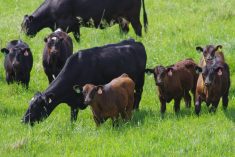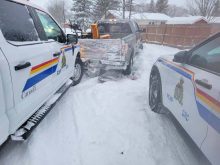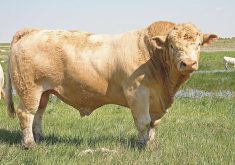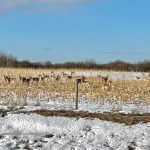A newly released survey says the U.S. ban on horse meat production has failed to protect unwanted horses, and an Alberta horse industry export predicts the growing problem of abandoned horses will see the ban reversed.
In some parts of the U.S., abandoned horses are becoming a road hazard, and the joke at auction barns is to lock your trailer so no one can sneak an unwanted horse into it.
The U.S. outlawed the slaughter of horses for human consumption in 2007. At the time, advocates of the ban predicted unwanted horses would be cared for in equine sanctuaries and retirement facilities. But, a University of California survey found rescue and sanctuary organizations can only care for about 13,400 horses a year, a small fraction of the 100,000 horses that become unwanted each year.
Read Also

Grazing ‘sweet spot’ boosts pasture performance
Timing-focused approach to pasture management touted to boost forage growth, livestock gains while also cutting farmer labour and inputs
Kathryn Holcomb, of the university’s Institute of Animal Welfare, surveyed the 236 registered nonprofit horse rescue and sanctuary groups. The groups are spread across 37 states and most reported they care for 10 to 20 horses on an average of 30 acres. They depend on donations, volunteers and personal funds, with their costs averaging $3,648 per year.
The horses in care were, on average, about 12 years old, but ranged from a few days old to the very aged. Most were thoroughbreds and quarter horses, and about half were in poor body condition, injured, lame or ill. Of the horses accepted by these organizations, about three quarters were sold or adopted. Most groups surveyed had been unable to accept all the horses they were offered.
The horse sanctuaries gave several reasons for owners’ inability to care for their animals: financial hardship, physical inability, or lack of time. Some were seized because of neglect or abuse.
Holcomb calls for more education of owners about the responsibility of caring for horses throughout their lives, and for reassessment of training and handling methods that might contribute to problems. She also suggests other breeds follow the lead of the thoroughbred association, which dedicates $1 of each registration fee to support groups caring for unwanted horses.
The high horse population, the economic downturn, and the lack of buyers of last resort has led to dumping of horses. Auction barns have reported finding horses tied to fences on horse sale days. Horses are also being turned loose on public lands, First Nations lands, reclaimed mine sites and even roads, where they are pose a severe hazard for motorists.
Alberta has a Temple Grandinapproved, federal vet-supervised plant to deal with some of the province’s 300,000 horses, as well as those from other areas. The price of horses for meat is low, but the market is there for animals in reasonably good shape, said Les Burwash, Alberta Agriculture horse industry specialist.
“You have to remember the plant is buying animals for meat,” said Burwash. “You can’t expect them to pay much for animals they can’t use.
“It’s just like selling beef to Cargill or any other packer. They can’t buy what they can’t use. And, even if it’s not much, the plant offers an option. It’s a lot better than having them dumped where they’re a danger to traffic, including school buses.”
Prices at recent quality horse sales have been solid, said Burwash, and average prices have increased recently at warmblood and cow horse sales. He said there has been a significant drop in breeding and registrations in breed associations in the last two years, and the excess of registrations over transfers a measure of overproduction has been reduced.
Eventually, fewer horses will be available for meat, and the plant will have to pay more and go further afield for its supplies, he said.
Burwash also said he expects the U.S. will be forced to reconsider its ban on horse slaughter for human consumption. Unwanted horses are likely to become an even greater problem before that happens, though.
“There may be some sober second thought coming about,” he said. “They seem to be realizing their mistake and that a ban is not the way to go. My gut feeling is that there’ll be a new plant, maybe in Montana or the Dakotas and perhaps another in Texas, but it will likely take three years.”
———
Youcan’texpectthemto paymuchforanimals theycan’tuse.It’sjust likesellingbeeftoCargill oranyotherpacker. Theycan’tbuywhatthey can’tuse.”
Les Burwash
Alberta Agriculture horse industry specialist














